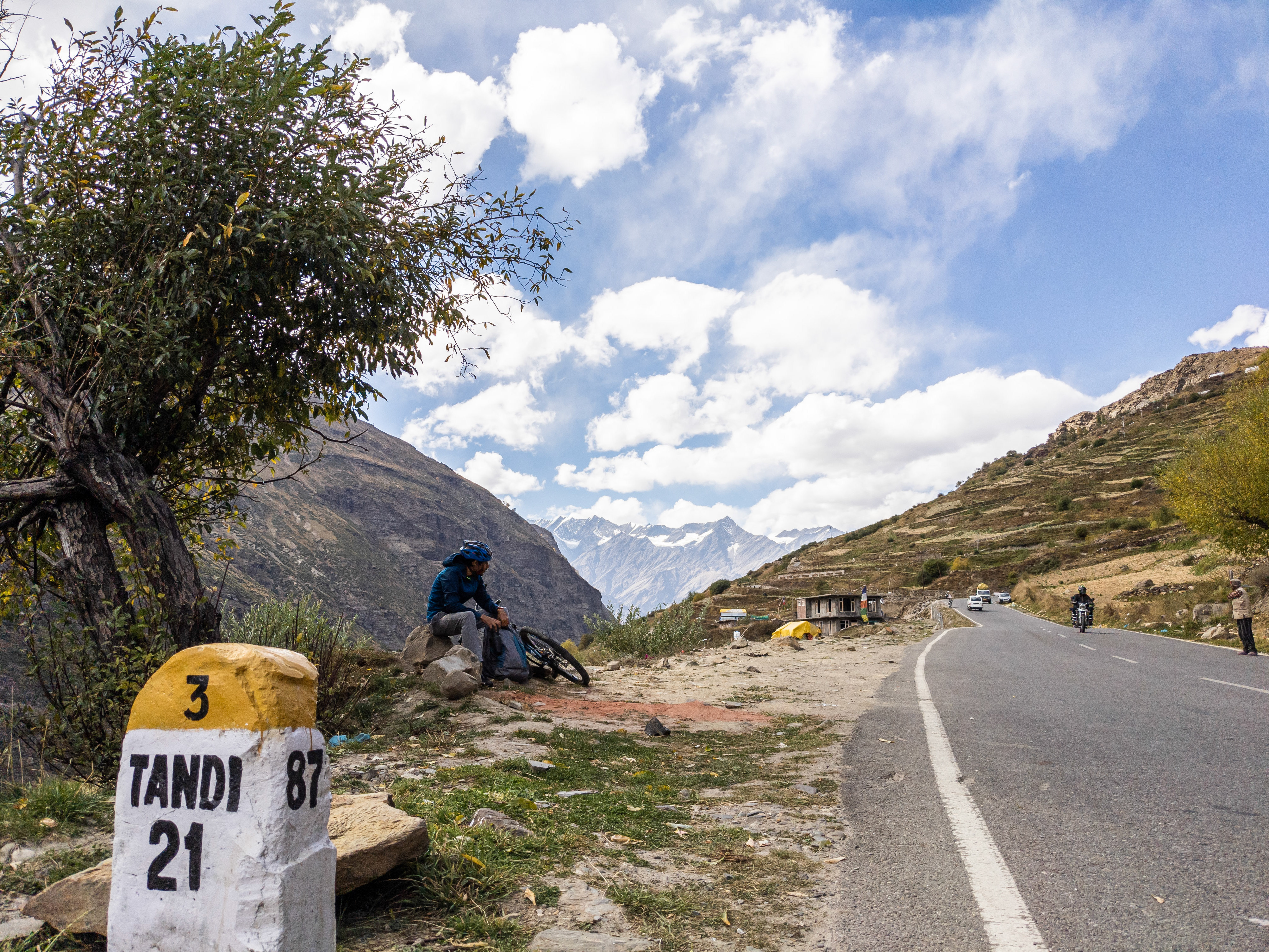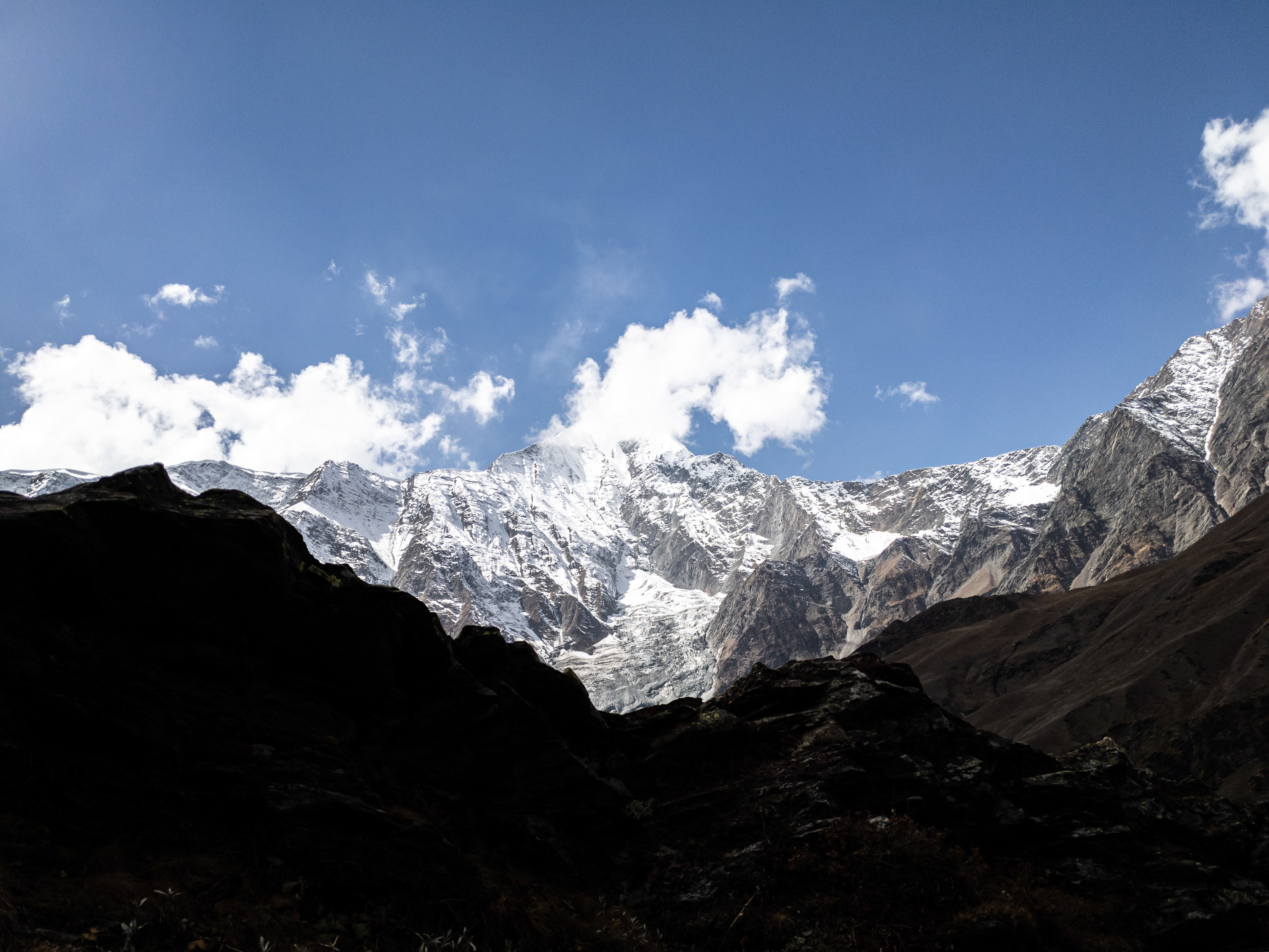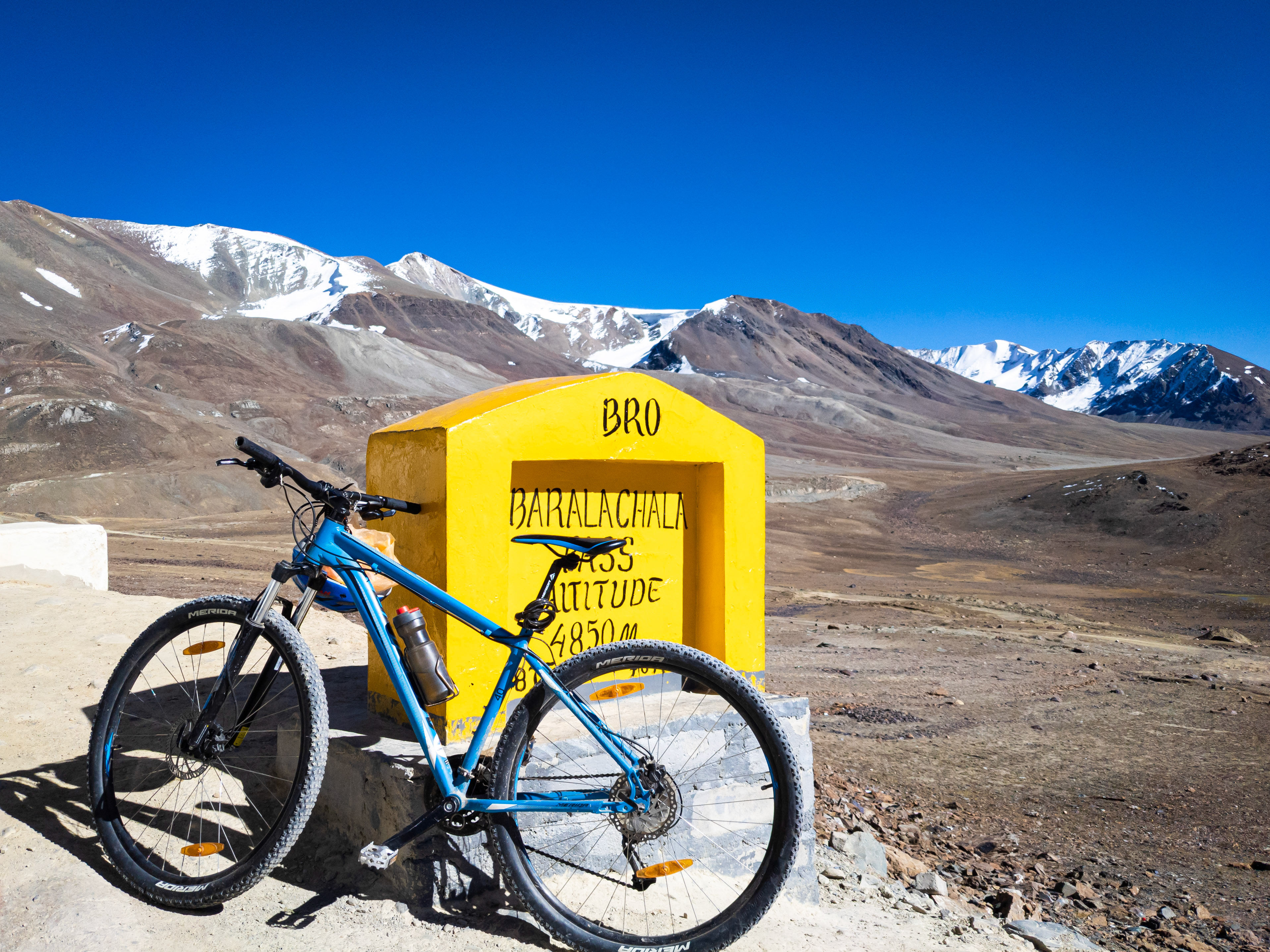When I first thought of riding the infamous Khardung La pass, I was well aware about the difficulty of riding on the 5% incline for long hours. I also "knew" about the lack of oxygen. What I hadn't put much thought into was my own readiness. Maximum altitude on this pass reaches upto 5359 m. It is the second highest motorable pass in the world. Before this, I had tried Baralacha La pass 2 years ago, which I failed miserably after 30 km and had to take a ride in a truck to reach the top. I didn't want to repeat the same and wanted to reach the top this time on my own. So, I planned to start earlier than I did for Baralacha La.
There are few things to consider before trying something like this. First is to acclimatise your body for the high altitude it is going to face. So, I stayed in the Leh city for a week, which itself is at the height of ~3500m. To fasten the process, I also went on a few easy runs on a small nearby hill. Second is fuelling the body for the physical challenge. After being out of practice for so long I had forgotten how to fuel myself on and before the ride. Not eating and drinking at the right time can make or break your ride. I started from my hostel with two omelettes, water and chips in my bag early morning around 6:45 AM. No restaurant or shops were open at this time so I had to start without eating anything, this was my first mistake. I was already out of breath in the first few kilometres. At this time, it dawned on me how hard this challenge is going to be.


After just 2 kilometers, I paused to mentally prepare for the arduous journey ahead, realizing that I had 35 more to go, with diminishing oxygen levels adding to the difficulty. All of the time that I thought I had, now, all of it seemed not enough. I got back on my bike and resumed the ride after giving some motivation to myself.
Elevation profile of the route
Cold temperature was making it harder to keep my body warm. Fatigue was building up faster than it usually happens on the plains, may be due to reduced oxygen. I was moving at the average speed of almost 8 km/hr in the first 20 km which got reduced to almost 5 km/hr in the last 15 km.
Arriving at the South pullu check-post around 11:30 AM with 14 kilometres still to go, I felt optimistic about reaching the top within my planned timeframe of 3 hours. But, I didn't realise that my body was giving up, even though my mind was still determined to finish what I had started. Lungs were working too hard to extract whatever amount of oxygen was possible at that altitude. Fatigue and lactic acid build up in my legs felt like I had been riding for days. I ate and drank as much as I could but nothing seemed to work, may be it was too late for that. I kept dragging my body and the bike, moving at snail's pace and sometime walking.


Australian guys
On my way, I met two Australian guys who were also going towards the pass, while they stopped to eat something I moved ahead. I met them again in South Pullu where they decided to stop for the night and I kept going.
At 27 km, I laid down on a big rock and closed my eyes in the hope of taking a nap in the silence. I could clearly hear my heart beating like it would come out of my chest any moment. I was loosing all hopes and was thinking about returning back. Soon, a guy, who was also going to the pass on a scooter, stopped to chat. He told me that he was also a cyclist and had completed the ride to Khardung La pass a few years back. He gave me an energy bar to eat and encouraged me to keep going slowly. After some more rest, I decided to continue. Despite ongoing struggles, I pressed on, battling fatigue, dwindling oxygen, and the disheartening realisation that each turn brought no end in sight.




Somewhere on the route while suffering
In the last few kms, disappointed by turn after turn, I became frustrated. My body and brain functions were slowing down probably due to low oxygen and tiredness. Fatigue had taken over my body and I developed a headache, a possible sign of AMS. Whenever I stopped for rest, which was almost every 100m, I didn't feel like getting up and just wanted to sleep. Hands were frozen and shivering, leaving me unable to open my bottle to drink water. Weather also took a U-turn from sunny to cloudy. There had been a snow fall 2 days back at the pass and it was possible that it could happen again today. I knew that I was close to the pass but it became mentally really hard to stay hopeful. I still had 45 minutes left before my cut off time to return but I had realised that it was not safe for me to stay there anymore or keep going. I needed to head down to lower regions. At this moment, just two kilometres from the pass and at the altitude of 5251m, I made a difficult decision to return back.




While returning back
Though disappointed not to reach the summit, I found excitement in the prospect of the downhill journey—a 35-kilometer descent that promised respite from the gruelling ascent. Energised by the anticipation of speed, I prepared myself for the strong winds by covering myself properly. I was enjoying the speed after hours of sluggish progress and suddenly got into a minor accident. Due to my speed and loose sand on the road I couldn't make the turn and almost came under a car. Surprisingly, nothing happened to me or my bike except a few scratches.


Heart rate vs Speed. (taken from Strava)
Despite the challenges and setbacks, I am certain that, I will cherish the memories of this journey - the suffering and pain I endured, the music of the wind I experienced in my ears while coming down and the unparalleled beauty of the mountains. The good thing about riding in the mountains is that you can push as far as your body allows and once you are exhausted you can just turn back and enjoy the fruits of your hard work. That's it from this story. More photos from the ride and from the Leh city can be found here and strava activity link here.





